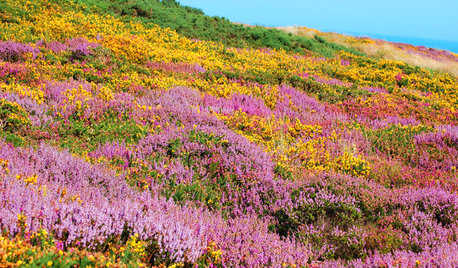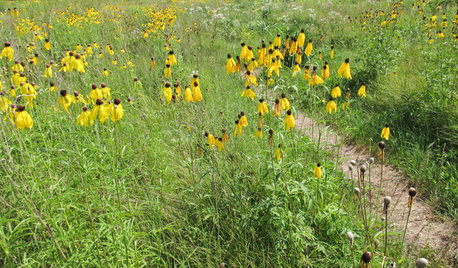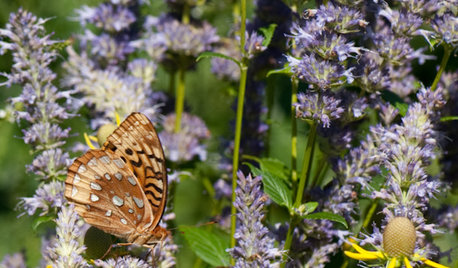visiting gardeners seeks garden resources for / in southern NH
klew
13 years ago
Related Stories

INSPIRING GARDENSNative Plants Bring 10 Southern California Front-Yard Gardens to Life
Rare plants, rain gardens and wildlife habitats are just a few of the features showcased on the 2016 Theodore Payne Native Plant Garden Tour
Full Story
GARDENING GUIDES9 Clay-Busting Native Flowers for Summer Sun
These plants survive and even thrive in tough clay soil east of the Rocky Mountains
Full Story
GARDENING FOR BUTTERFLIESGreat Design Plant: Scotch Heather
The moors aren't all moody, as this prettily colored evergreen shrub proves. Plant it en masse for an epic romance in your own garden
Full Story
GARDENING FOR BIRDSWild Birds Transform a Woman’s Garden and Life
How Sharon Sorenson created a wildlife haven and became the Bird Lady of Southern Indiana
Full Story
FLOWERS AND PLANTSHelp Monarchs and Other Butterflies by Planting Common Milkweed
Summer-blooming Asclepias syriaca is an important larval host plant for the monarch butterfly and attracts a number of pollinating insects
Full Story
GARDENING GUIDESGreat Design Plant: Ratibida Pinnata Flutters in the Breeze
This bright coneflower brings splashes of yellow to eastern U.S. prairie gardens and perennial borders
Full Story
MY HOUZZMy Houzz: Goal of a Net-Zero Nest in Southern California
A Long Beach family focuses on energy efficiency in remodeling their 1957 ranch house
Full Story
GARDENING GUIDESGreat Design Plant: Anise Hyssop Delights Licorice Lovers
With its distinct scent and flower spikes, drought-tolerant Agastache foeniculum stirs interest among humans and winged creatures alike
Full Story
GARDENING GUIDES6 Steps to Creating Your Butterfly Garden
Encourage these fanciful winged beauties to visit your garden while helping restore their fragmented habitat
Full Story
GARDENING GUIDESAttract Hummingbirds and Bees With These Beautiful Summer Flowers
Roll out a welcome mat for pollinators to keep your landscape in balance and thriving
Full StorySponsored
Your Industry Leading Flooring Refinishers & Installers in Columbus
More Discussions






IpmMan
ginny12
Related Professionals
Jennings Landscape Architects & Landscape Designers · Prairie Ridge Landscape Architects & Landscape Designers · Pelham Landscape Contractors · Brooklyn Park Landscape Contractors · Ellicott City Landscape Contractors · Lynn Landscape Contractors · Mount Sinai Landscape Contractors · Oakland Landscape Contractors · Tuscaloosa Landscape Contractors · Wayland Landscape Contractors · Westford Landscape Contractors · Wickliffe Landscape Contractors · Elkridge Decks, Patios & Outdoor Enclosures · Boise Decks, Patios & Outdoor Enclosures · Westford Decks, Patios & Outdoor EnclosuresNHBabs z4b-5a NH
klewOriginal Author
mad_gallica (z5 Eastern NY)
klewOriginal Author
Thyme2dig NH Zone 5
NHBabs z4b-5a NH
klewOriginal Author
Thyme2dig NH Zone 5